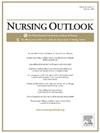处方阿片类药物使用者健康和医疗保健利用的社会决定因素:横断面倾向评分分析
IF 3.7
2区 医学
Q1 NURSING
引用次数: 0
摘要
阿片类药物危机继续构成重大的公共卫生挑战,处方阿片类药物的使用加剧了医疗负担和差距。目的:在国家少数民族健康与健康差异研究所(NIMHD)研究框架的指导下,本研究调查了使用处方阿片类药物(PPOU)和不使用处方阿片类药物的人之间健康的社会决定因素(SDoH)和医疗保健利用的差异。方法对来自2021年医疗支出小组调查(n = 1,716)的数据进行横断面分析,并应用倾向评分匹配来调整社会人口统计学和临床因素。住房不稳定、生活不满、压力和交通障碍等因素与较高的医疗保健利用率相关,突出了SDoH的复杂影响。结论ppou面临着与SDoH相关的不成比例的挑战,并且具有更高的医疗利用率。护士主导的综合护理模式可以提高护理的连续性,减少碎片化,并有助于解决PPOU之间的差异。本文章由计算机程序翻译,如有差异,请以英文原文为准。
Social determinants of health and healthcare utilization among prescription opioid users: A cross-sectional propensity scoring analysis
Background
The opioid crisis continues to pose a significant public health challenge, with the use of prescription opioids contributing to healthcare burdens and disparities.
Purpose
Guided by the National Institute on Minority Health and Health Disparities (NIMHD) Research Framework, this study examined the differences in social determinants of health (SDoH) and healthcare utilization between people who use prescription opioids (PPOU) and those who do not.
Methods
We conducted a cross-sectional analysis of data from the 2021 Medical Expenditure Panel Survey (n = 1,716) and applied propensity score matching to adjust for sociodemographic and clinical factors.
Discussion
Factors such as housing instability, life dissatisfaction, stress, and transportation barriers were associated with higher healthcare utilization, highlighting the complex impact of SDoH.
Conclusion
PPOU face disproportionate challenges related to SDoH and experience greater healthcare utilization. Nurse-led, integrated care models may enhance continuity of care, reduce fragmentation, and help address disparities among PPOU.
求助全文
通过发布文献求助,成功后即可免费获取论文全文。
去求助
来源期刊

Nursing Outlook
医学-护理
CiteScore
6.20
自引率
7.00%
发文量
109
审稿时长
25 days
期刊介绍:
Nursing Outlook, a bimonthly journal, provides innovative ideas for nursing leaders through peer-reviewed articles and timely reports. Each issue examines current issues and trends in nursing practice, education, and research, offering progressive solutions to the challenges facing the profession. Nursing Outlook is the official journal of the American Academy of Nursing and the Council for the Advancement of Nursing Science and supports their mission to serve the public and the nursing profession by advancing health policy and practice through the generation, synthesis, and dissemination of nursing knowledge. The journal is included in MEDLINE, CINAHL and the Journal Citation Reports published by Clarivate Analytics.
 求助内容:
求助内容: 应助结果提醒方式:
应助结果提醒方式:


